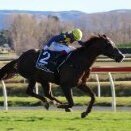-
Available Subscriptions
BOAY Racing News
39,048 topics in this forum
-
- Journalists
I Am The Fox set for Darwin return on Saturday
-
- Journalists
- 0 replies
- 131 views
-
-
- Journalists
- 0 replies
- 168 views
-
-
- Journalists
Darci La Bella vying for four straight
-
- Journalists
- 0 replies
- 139 views
-
- Journalists
Vale Ron Barron
-
- Journalists
- 0 replies
- 169 views
-
- Journalists
Silverlinings seeking gold at Addington
-
- Journalists
- 0 replies
- 131 views
-
- Journalists
Lord Logan sheds maiden title at Cambridge
-
- Journalists
- 0 replies
- 196 views
-
-
- Journalists
- 0 replies
- 143 views
-
-
- Journalists
Broodmare paddock beckons for True Fantasy
-
- Journalists
- 0 replies
- 132 views
-
- Journalists
Karaka 2023 parade schedule
-
- Journalists
- 0 replies
- 194 views
-
- Journalists
Purple Sector hunting overdue win
-
- Journalists
- 0 replies
- 976 views
-
-
- Journalists
- 0 replies
- 202 views
-
-
-
- Journalists
- 0 replies
- 136 views
-
-
-
- Journalists
- 0 replies
- 120 views
-
-
-
- Journalists
- 0 replies
- 157 views
-
-
- Journalists
Thorndon Mile in Winsloe’s sights
-
- Journalists
- 0 replies
- 953 views
-
- Journalists
Patterson predicting fireworks at Trentham
-
- Journalists
- 0 replies
- 132 views
-
- Journalists
The Phoenix: Armchair Guide
-
- Journalists
- 0 replies
- 183 views
-
-
- Journalists
- 0 replies
- 115 views
-
-
-
- Journalists
- 0 replies
- 111 views
-
-
-
- Journalists
- 0 replies
- 124 views
-
-
-
- Journalists
- 0 replies
- 154 views
-
-
-
- Journalists
- 0 replies
- 126 views
-
-
-
- Journalists
- 0 replies
- 159 views
-
-
- Journalists
New Awards announced for 2023
-
- Journalists
- 0 replies
- 160 views
-
-
- Journalists
- 0 replies
- 130 views
-



